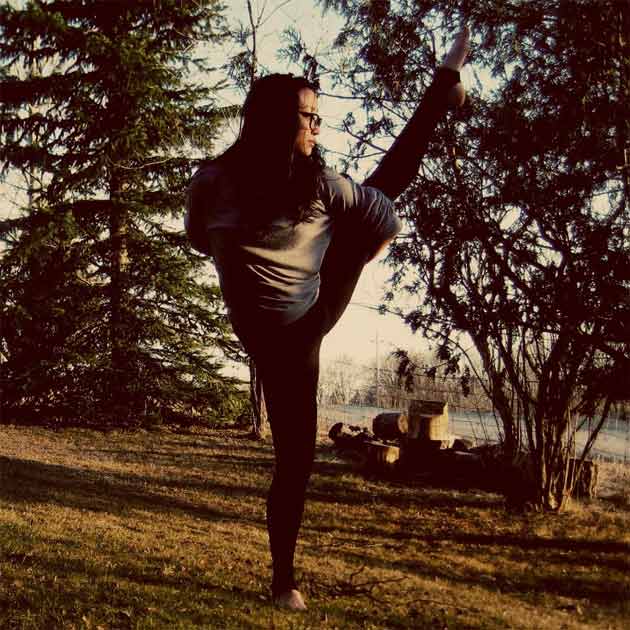Despite what you may think, Bird of Paradise pose (Svarga Dvidasana) is named after a beautiful flower as opposed to a quirky, tropical bird. Using the imagery of a blossoming flower is a great way to prepare yourself mentally and physically for this advanced pose, which combines a bind, a balance, and a strong extension of the lifted leg to inspire you to grow. Just as a flower garden requires careful tending and care, so too does your practice require commitment and dedication for your bud to come into full bloom. Even if you fall, always remember — falling down is only an opportunity to rise even better than you were before.
Benefits Of Bird Of Paradise Pose
As a balancing pose, Bird of Paradise strengthens the standing foot, ankle, knee and thigh and improves focus, balance and concentration. The extension of the lifted leg also helps to stretch the hips, groin and hamstrings, and the bind encourages a deep sense of openness through the shoulders and chest while providing a gentle massage for the internal organs.
Bird Of Paradise Pose Step-By-Step
- Begin in a gentle forward fold (Uttanasana). Step the feet slightly wider than hip-distance apart.
- Send your right arm between your legs as if you are actively reaching for the back wall with your right hand. Bend your right elbow around the back of your right leg and place the top of your right hand on your lower back (palm facing upwards).
- Reach your left arm behind you and clasp your hands together.
- Keep your gaze focused on one fixed point on the ground in front of you, come up onto the ball of your right foot, and begin to shift your weight fully into your left foot.
- On an inhale, slowly begin to come upright to stand, maintaining the bind around the right leg and keeping the right knee bent.
- Once you’ve come up to stand, take a breath here, finding your balance and strength. If you feel steady, begin to extend your right leg fully and flex your right foot.
- Notice if your upper body begins to collapse and get pulled forward by the bind here, and actively press both of your shoulders back and maintain a sense of openness through the chest.
- To come out of the pose, bend your right knee and begin to fold forward over your legs, bringing your right foot back down onto the mat for Uttanasana. Gently release the bind and remain relaxed in a forward fold for several deep breaths. Whenever you feel ready, repeat on the other side.
Tips:
- If the combination of the bind and the balance feels too intense, you can try practicing a seated variation of this pose instead. From a comfortable cross-legged style seated position, bind around one leg and work on the extension of the lifted leg.
- Maintaining a drishti (point of focus) with the eyes is one of the easiest ways to help with your balance and concentration in this pose. Rather than looking at anything that might move (such as another person or your reflection in the mirror), choose a drishti that is steady and unwavering.
- There are several different ways to come into Bird of Paradise pose in a flowing vinyasa style practice. Once you feel comfortable coming into your expression of the pose in a thoughtful, aligned manner, try entering from Bound Extended Side-Angle pose (Utthita Parsvakonasana) or Bound Triangle (Trikonasana). Allow yourself to get creative and be playful!
- As with any pose requiring a deep opening through the shoulders, the bind may feel intense. Feel free to hold on to opposite ends of a strap if binding with the hands feels like too much for your body. Gomukhasana arms is also a wonderful preparatory pose for the shoulders.


